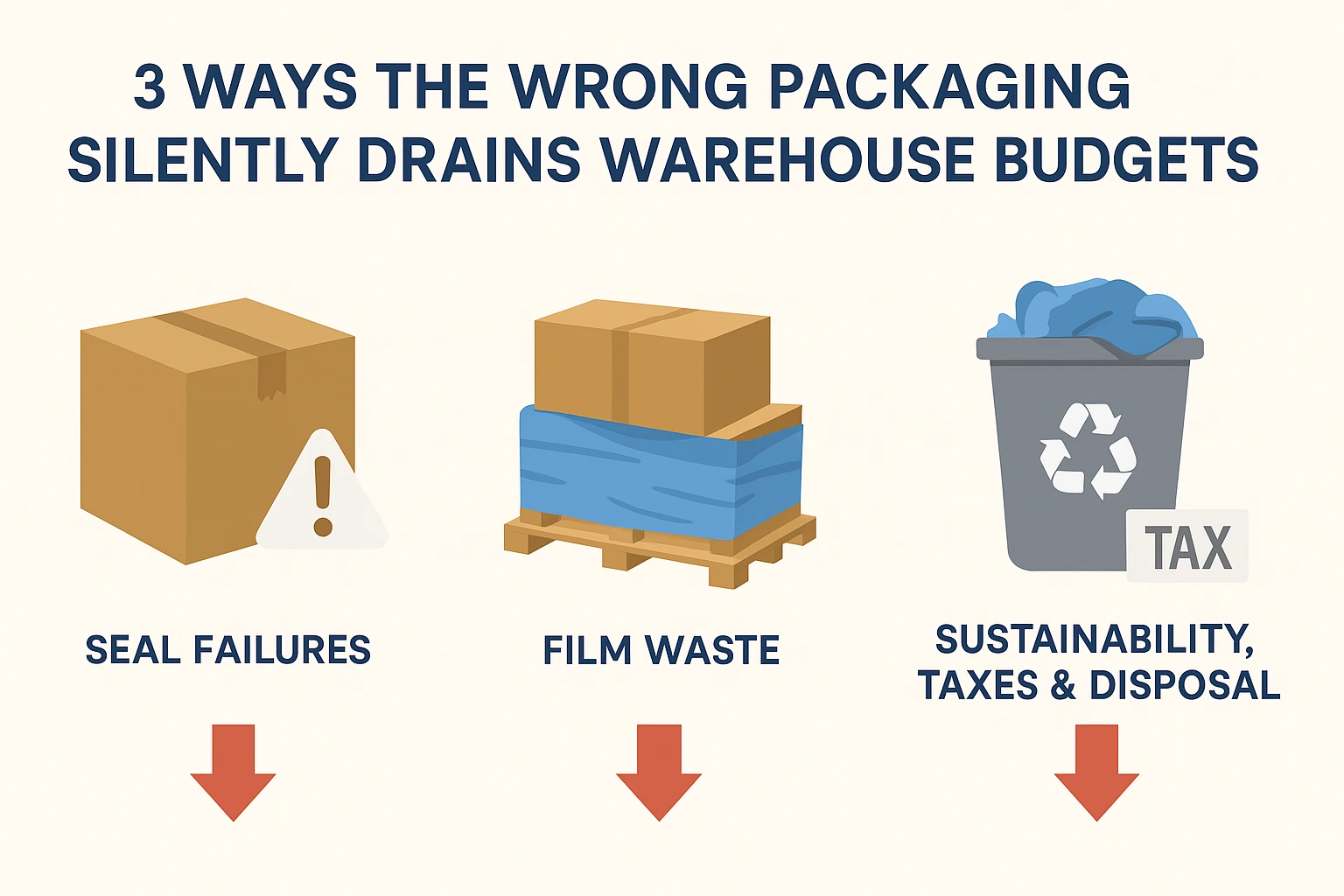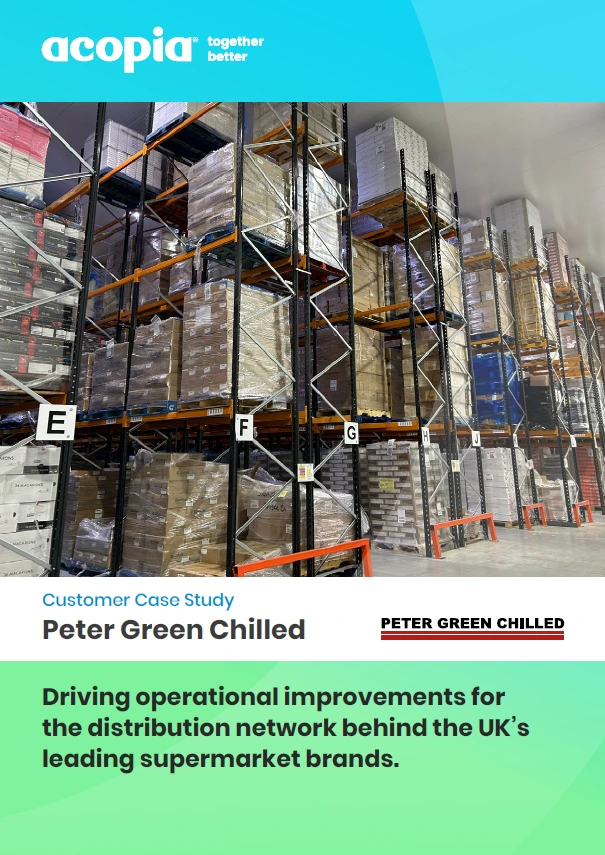
The hidden leaks in every warehouse
In fast-moving logistics operations, rising costs are often attributed to labour, fuel, or transport. Yet one frequently overlooked factor quietly undermines profitability: packaging.
The wrong parcel tape or pallet wrap can turn a simple shipment into a costly problem. It can increase costs through product loss, rework, wasted materials and regulatory fees.
DS Smith reports that millions of parcels in the UK arrive damaged each year, leading to substantial costs in returns, replacements, and lost sales [1].
The European Safety Logistics Organisation (EUMOS) notes that up to 4% of palletised goods can arrive at their destination damaged, often due to inadequate or unsuitable packaging [2][3].
Even minor packaging failures can translate into measurable losses on a profit-and-loss statement. In this article, we’ll unpack the three hidden ways poor packaging silently drains warehouse budgets and how switching to high-performance product solutions can plug those leaks for good.
The problem
Weak adhesion is one of the most common and most overlooked packaging failures. Boxes can open in transit exposing goods to damage or contamination.
Poor surface compatibility, incorrect adhesive type, or storage conditions can all cause tape to lose its adhesion. The result? Reworks, damaged goods and unhappy customers.
The hidden cost
Since these costs often appear under “returns” or “customer service,” tape is rarely identified as the root cause.
The fix: selecting the right tape
Selecting the right tape for your organisation is the answer to stress free, smooth deliveries that don’t cost more than they need do. Whether it’s the material used such as polypropylene, vinyl or paper, or the adhesive itself – it needs to work for all your storage, boxing up and transit needs.
Do you require a tape that works in cold environments? Has an immediate and strong tack? Are you using boxes with a high level of recycled content? Will you need to store yourloaded pallets for long periods? Do you need a sustainable option that won’t fail? These factors will affect your tape selection.
High-performance parcel tapes with strong initial adhesion and long-term reliability reduce the risk of resealing and returns, leading to more predictable operational costs.
The problem
Pallet wrap is often over-applied to compensate for weak load stability performance or is applied incorrectly, resulting in unstable loads. Both scenarios lead to increased costs from material waste or damaged goods.
Low-performance stretch films can use up to twice the amount of material per pallet compared to high-performance alternatives.
The hidden cost
The fix: high-performance pallet wrap
High-performance stretch films are designed for maximum load containment with less material, improving stability and reducing waste. Benefits include:
“We’ve reduced waste, saved money, and improved our sustainability credentials, while improving performance using high performance film iWrap” Peter Green Chilled

Download the Peter Green Chilled Case Study to discover how they reduced their plastic use by 52% with iWrap high performance pallet wrap
EUMOS highlights the importance of high tear resistance in stretch film to ensure load stability and product safety [3].
“Stretch film plays an increasingly more important role. The film must have high tear resistance, so that the film does not break during the pallet wrapping process, and also does not break due to sharp edges or corners.” EUMOS
It's clear that using a high performance film can overcome the challenge of tear resistance and breakages.
By using high-performance wrap consistently, warehouses can reduce both material usage and associated labour costs for rewrapping and turn off the drain on resources and budget.
The problem
Packaging waste in the UK is heavily regulated with companies paying more if packaging is difficult to recycle or contains less than 30% recycled content.
Each kilogram of plastic produced emits roughly 2.5 kg of CO₂ making material efficiency a key environmental and financial consideration [4].
Large retailers, distributors and manufacturers are left with the bill to remove and recycle pallet wrap on the pallets they receive, even though their suppliers apply it.
Estimates suggest that a single large UK supermarket may receive up to 4,000 tonnes of pallet-wrap waste annually, highlighting the scale of the issue and the potential savings from better-performing materials.
The hidden cost
Industry data (BusinessWaste.co.uk, WRAP) indicate that contaminated soft-plastic recycling typically costs £150–£300 per tonne, depending on contamination and processing [5].
The fix: do more with less without compromising performance
Because suppliers choose the wrap, but the customer pays to remove and dispose of it, many are asking their suppliers to provide:
Poor packaging is rarely listed as a direct expense, but every failed seal, wasted wrap, and reworked pallet contributes to hidden costs. Across hundreds of daily shipments, these “silent drains” can add up to thousands of pounds per month.
What you can put in place straight away
Need support to get started with your 30 day pilot – just pop an email over to us at [email protected]
References